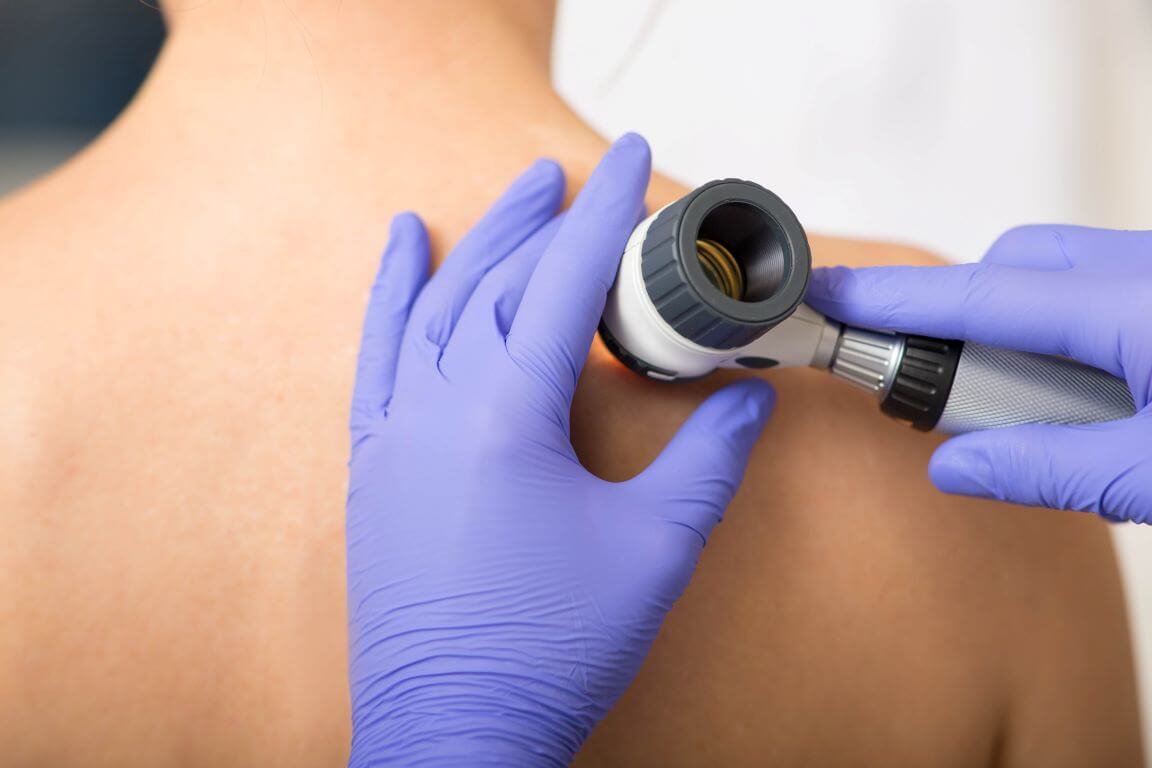A full-body skin exam performed by a board-certified dermatologist is an important element in an effective skincare routine. These annual skin cancer screenings ensure your skin stays healthy, you avoid serious skin health concerns, and you receive treatment in the earliest possible stages. According to Dr. Araya “Jay” Zaesim of U.S. Dermatology Partners in Lee’s Summit, Missouri, and Overland Park, Kansas, “Full-body skin exams offer benefits for everyone, but if you have a chronic skin condition, personal or family history of skin cancer, very pale skin, or other factors that indicate skin health risks, you may want to make annual skin health screenings a high priority.” In this blog, Dr. Zaesim discusses just what full-body skin exams are and what you should expect during these appointments.
The Importance of Monitoring Your Skin
Annual skin exams can be the difference between diagnosing skin conditions in early, treatable stages and having an uphill or unbeatable battle with serious skin health concerns. Specifically, annual screenings are a key factor in skin cancer prevention and early diagnosis. They allow your dermatologist to diagnose cancer in earlier stages before it’s able to spread. This makes it easier to treat.
What is a Full-body Skin Exam?
A full-body skin exam is a preventive dermatology treatment that involves a careful, visual inspection of the whole body by a dermatologist. The dermatologist will note and examine existing moles, freckles, birthmarks, and other lesions. They are looking for irregularities in the size, shape, color, and texture of these marks that may indicate serious health concerns, including skin cancer. Because dermatologists have advanced training and experience in diagnosing and treating skin health concerns, they are the best practitioners to provide these annual skin exams and help you plan for ongoing at-home care, dermatologic treatments, and other care as needed.
Preparation for the Exam
Before your annual skin exam, take the following preparatory steps:
- Perform monthly self-exams and take careful note of any new or changing marks or lesions on the skin. Share this information with your dermatologist.
- Complete your daily skincare routine as usual in the morning, including applying sunscreen.
- Wear comfortable clothing to the appointment. Specifically, try to find clothing that will not leave lines or impressions on the skin that could make it more difficult to clearly see skin issues.
- Wear your hair down or in a style that is easy to take down for your dermatologist to examine your scalp.
- Don’t wear any jewelry or other accessories that may cover your skin.
- Take off bandages or dressings if at all possible to expose all areas of skin to be easily examined.
- Remove nail polish, so your dermatologist can examine your nail beds where many forms of skin cancer can develop.
- Skip the cosmetics or remove makeup before your appointment, so the dermatologist can clearly see all areas of your skin.
During the Examination
When it comes to full-body skin exams, Dr. Zaesim says, “The definition of what to expect is right in the name. A full-body screening involves a careful examination of the entire body from head to toe for signs of any skin health concerns. Each dermatologist has their own style, but however they perform the exam, they will use a systematic approach that ensures they examine all areas of the skin. The entire examination shouldn’t take more than 15 to 30 minutes to complete.”
Below, we’ve outlined the basic steps of your screening, but your dermatologist should talk through them in detail before they begin:
- Your annual screening begins with you removing your clothing and putting on a medical gown.
- The dermatologist may utilize lights and/or magnification to more clearly see your skin.
- They will begin at the top of the head and work their way down to the feet.
- Unless you have specific concerns or are at high risk, your dermatologist will likely leave it up to you to decide whether they examine your buttocks and genital area. Those with lower risk can complete the exam with their underpants on.
- If suspicious spots are discovered, the dermatologist will make careful note of them.
Post-Examination Steps
After your skin exam, your dermatologist will sit down to go over your results. During the examination, they may point out areas of concern, and they’ll talk to you about what issues they see. Then, your dermatologist walks you through any follow-up diagnostic testing, like biopsies, that may be needed. Additionally, your dermatologist will discuss skincare products, dermatologic treatments, and other interventions you may need to achieve and maintain healthy skin. Specifically, your dermatologist will provide recommendations for keeping skin safe in the sun, including what sunscreen works best to protect your skin type. If you’re looking for a good daily sunscreen to boost your skincare routine, ALASTIN Skincare SilkSHIELD All Mineral Sunscreen SPF 30 with TriHex Technology offers effective sun protection that’s safe for all skin types. Finally, your dermatologist will work with you to schedule additional appointments for treatments or follow-up care as needed.
Benefits of Regular Full-body Skin Exams
There are numerous benefits to visiting a dermatologist each year for a professional full-body skin exam, including:
- Developing effective skincare routines
- Managing common skin conditions
- Diagnosing skin conditions early
- Discovering and treating skin cancers early
- Developing better overall skin health
- Preventing skin cancer and other skin health concerns
Empower Yourself Through Knowledge and Vigilance
According to Dr. Zaesim, “Skin health issues in general and skin cancer specifically are always easier to treat when they’re diagnosed in the earliest stages. It’s very important to be proactive with skincare at home and with regular, professional skin exams. Partnering with a dermatologist, you can develop an effective skincare routine, find the best skincare products, and address any concerns that arise as soon as possible.”
Schedule an Annual Skin Exam with a Dermatologist
Whether you’re at a high risk for skin cancer or you just want to work toward healthier, more attractive skin, it’s essential to schedule an annual skin exam with a skilled dermatologist. When you’re ready to get started, simply take a few moments to complete our online scheduling request. Once a local U.S. Dermatology Partners team member hears from you, they’ll reach out to finalize the details of your visit. Between your annual visit, be sure to perform monthly skin health self-exams to check for areas of concern, and don’t hesitate to reach out to a dermatologist if you notice anything concerning.
Find a location near me
or


